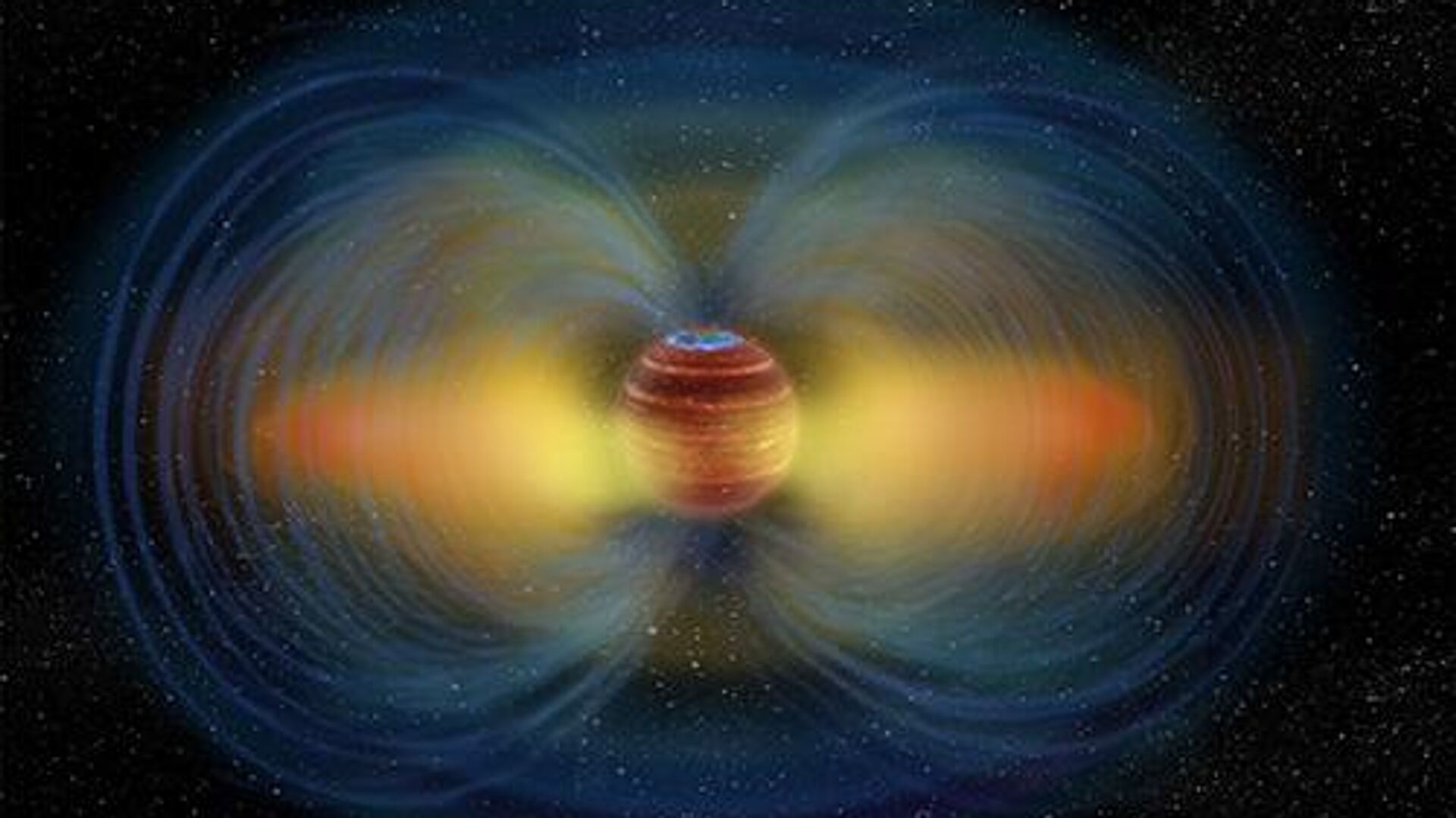Astronomers Spot Radiation Belt Outside Solar System for the First Time
23:22 GMT 19.05.2023 (Updated: 17:11 GMT 20.06.2023)

CC0 / Chuck Carter, Melodie Kao, Heising-Simons Foundation / Resolved imaging confirms a radiation belt around an ultracool dwarf
Subscribe
The global magnetic field can trap cosmic particles and accumulate them around a planet, thus adding to the chances of life emerging on the planet. One such field was found on a distant brown dwarf - and an extremely powerful one at that.
Astronomers have detected the first radiation belt observed around a planet sitting outside the solar system, new findings revealed.
The team used an array of 39 radio telescopes coordinated by the US-based National Radio Astronomy Observatory and the Effelsberg radio telescope operated by the Max Planck Institute for Radio Astronomy in Germany.
Radio images from the ultracold dwarf LSR J1835+3259, which sits some 18.5 light-years away from the sun, revealed a cloud of high-energy electrons trapped in the celestial body's powerful magnetic field.
"By combining radio dishes from across the world, we can make incredibly high-resolution images to see things no one has ever seen before. Our image is comparable to reading the top row of an eye chart in California while standing in Washington, DC," said coauthor Jackie Villadsen at Bucknell University.
Scientists viewed the dwarf planet in the radio spectrum and detected a radiation belt emitting about 10 million times more powerfully than those spotted near the giant Jupiter. Officials indicated It stretches out to a distance of up to 18 radii from LSR J1835+3259. This is where the particles that fall towards the dwarf's poles and create bright lights.
"We are actually imaging the magnetosphere of our target by observing the radio-emitting plasma—its radiation belt—in the magnetosphere. That has never been done before for something the size of a gas giant planet outside of our solar system," said Melodie Kao, a postdoctoral fellow at UC Santa Cruz and first author of a paper.
To generate a magnetic field, a planet's interior must be hot enough to have conductive fluids, which in the case of Earth is the molten iron in its core. On Jupiter, the conductive liquid is hydrogen, which is under so much pressure that it becomes metallic.
Metallic hydrogen likely also produces magnetic fields in brown dwarfs, Kao noted, while in the interior of stars the conductive liquid is ionised hydrogen.
The strength and shape of the magnetic field is an important factor in determining a planet's habitability.
"When we’re thinking about the habitability of exoplanets, the role of their magnetic fields in maintaining a stable environment is something to consider in addition to things like the atmosphere and climate," Kao said.
A radiation belt is a region of planets' magnetospheres where high-energy charged particles that have entered the magnetosphere accumulate and are trapped.
Strong magnetic fields form a 'magnetic bubble' around the planet - the magnetosphere. This traps and accelerates the particles to nearly the speed of light. All planets in the solar system with magnetic fields, including the Earth and Jupiter, have radiation belts made up of these high-energy charged particles trapped by the planet's magnetic field.
"This is a critical first step in finding many more such objects and honing our skills to search for smaller and smaller magnetospheres, eventually enabling us to study those of potentially habitable, Earth-size planets," said coauthor Evgenya Shkolnik at Arizona State University.
The Earth's radiation belts is known as the Van Allen belts.
The results of the observations were published in the journal Nature.


